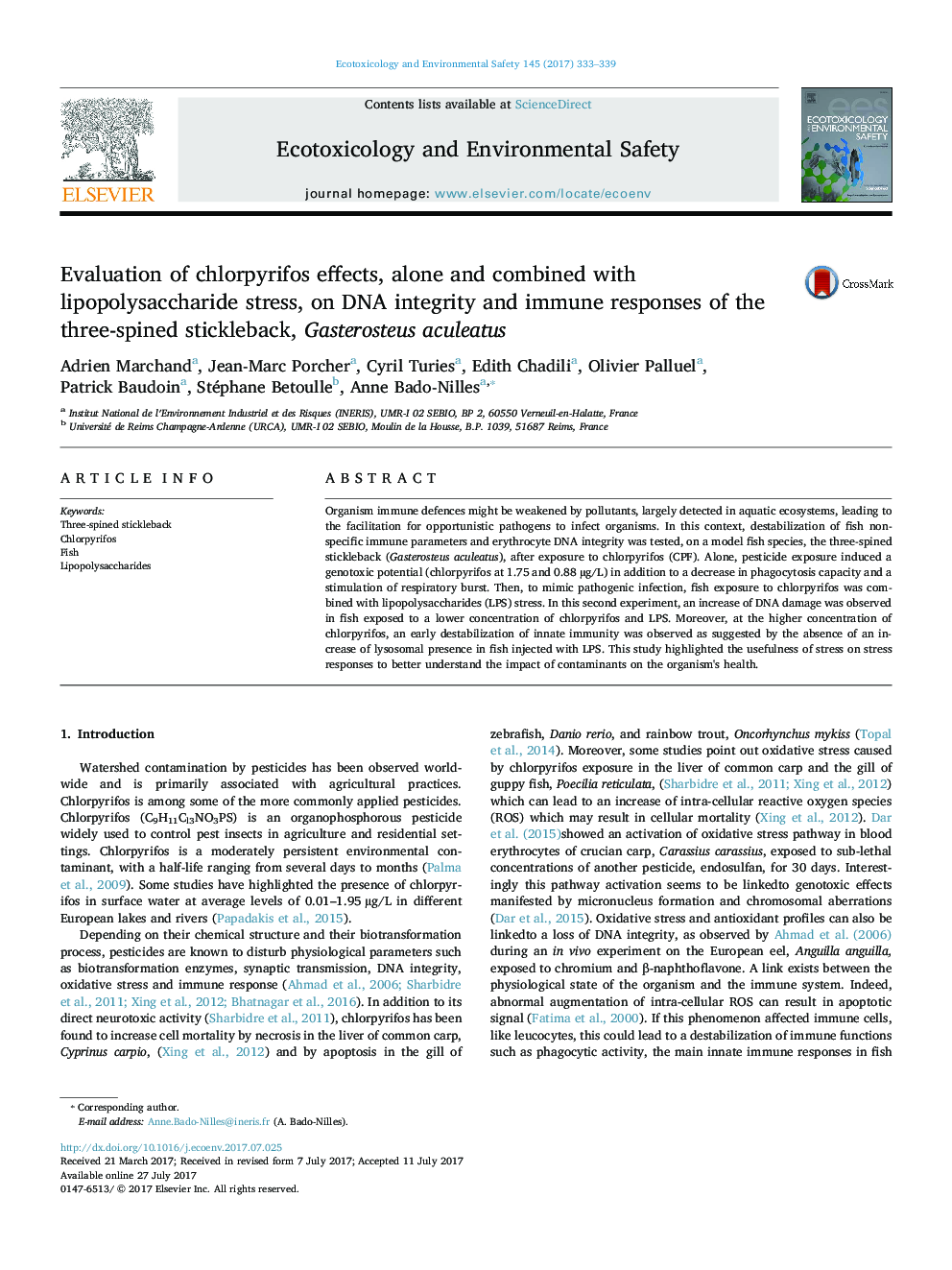| کد مقاله | کد نشریه | سال انتشار | مقاله انگلیسی | نسخه تمام متن |
|---|---|---|---|---|
| 5747722 | 1618919 | 2017 | 7 صفحه PDF | دانلود رایگان |

- CPF caused DNA damage and modulated splenic leucocyte activities.
- CPF exposure followed by LPS injection destabilized the fish innate immune system.
- CPF genotoxic potential seems to be enhanced by LPS injection.
Organism immune defences might be weakened by pollutants, largely detected in aquatic ecosystems, leading to the facilitation for opportunistic pathogens to infect organisms. In this context, destabilization of fish non-specific immune parameters and erythrocyte DNA integrity was tested, on a model fish species, the three-spined stickleback (Gasterosteus aculeatus), after exposure to chlorpyrifos (CPF). Alone, pesticide exposure induced a genotoxic potential (chlorpyrifos at 1.75 and 0.88 µg/L) in addition to a decrease in phagocytosis capacity and a stimulation of respiratory burst. Then, to mimic pathogenic infection, fish exposure to chlorpyrifos was combined with lipopolysaccharides (LPS) stress. In this second experiment, an increase of DNA damage was observed in fish exposed to a lower concentration of chlorpyrifos and LPS. Moreover, at the higher concentration of chlorpyrifos, an early destabilization of innate immunity was observed as suggested by the absence of an increase of lysosomal presence in fish injected with LPS. This study highlighted the usefulness of stress on stress responses to better understand the impact of contaminants on the organism's health.
Journal: Ecotoxicology and Environmental Safety - Volume 145, November 2017, Pages 333-339